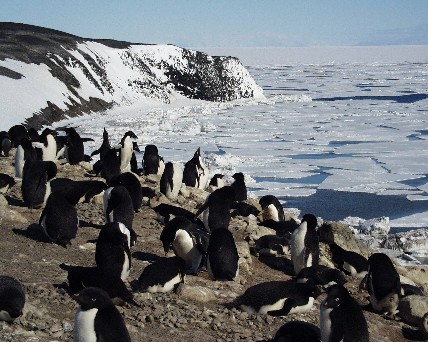Penguins blamed for accumulation of arsenic in Antarctica soil
 London, August 22 : Penguin guano has been accused of dumping arsenic in Antarctica soil by Chinese researchers.
London, August 22 : Penguin guano has been accused of dumping arsenic in Antarctica soil by Chinese researchers.
A research team led by Zhouqing Xie of the Institute of Polar Environment at the University of Science and Technology of China studied at how much arsenic was found in the droppings of three bird species, and two seal species that live on Ardley Island, off the Antarctic peninsular.
The researchers discovered that the droppings of the gentoo penguin contained far more than those of the other species — about twice as much as the droppings of the southern giant petrel, and up to three times more than the local seals.
They also said that sediments from another Antarctic island, which has no resident penguins but has a similar geology, contained half the levels of arsenic compared with sediment sampled on Ardley Island.
To find out how arsenic levels change with the number of penguins in the area, Xie''s team took a 34 centimetre mud core from the bottom of a lake on Ardley Island.
It allowed them to measure how arsenic levels have fluctuated over the past 1,800 years, and also to estimate how the local penguin population changed.
The researchers found that changes in the local penguin population were followed by changes in the arsenic levels in the lake.
Xie said that more penguins meant more arsenic.
The researchers say that arsenic present in the water is absorbed by krill, and then accumulates in the food chain, passing to predators such as penguins.
According to them, it is not known why the contaminant should be excreted more by penguins than by other top predators, such as seals.
"It may be related to how arsenic is metabolised by penguins," says Xie.
Based on their findings, the researchers came to the conclusion that Gentoo penguin populations could be used as a gross indicator of arsenic levels in Antarctic soil.
Their study has been published in the journal Environmental Geology. (ANI)